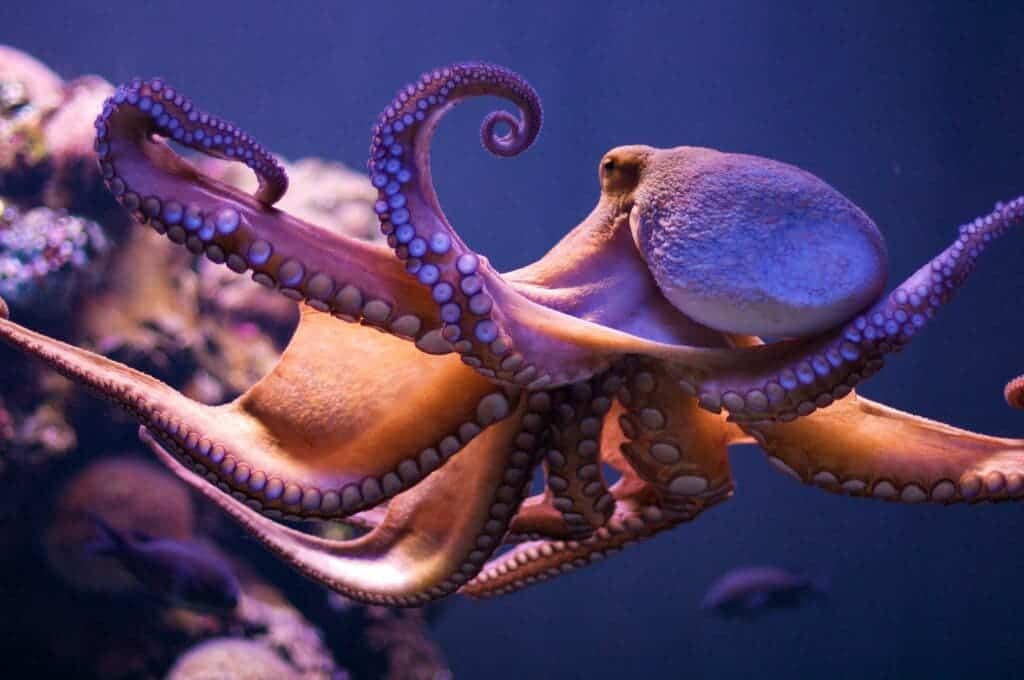The word octopus, the name of the tentacled sea creature, derives from the Green “okto,” which means eight, and “pous,” foot – so literally eight feet. But there’s always an exception to the rule. Researchers have found an octopus fossil with 10 arms. Dating back to 328 million years ago, this makes it the oldest known ancestor of modern octopuses. It’s so old that it’s over 70 million years older than the first dinosaurs.

The fossil was found in central Montana in the United States and pushes back the time when vampyropods — the group to which cephalopods like octopuses belong — first appeared in the ocean by 82 million years. The octopus measures 12 centimeters, has 10 limbs (two twice as long as the other eight), and likely lived in what was then a shallow, tropical ocean bay.
“This is the first and only known vampyropod to possess 10 functional appendages,” study author Christopher Whalen said in a statement. “All previously reported fossil vampyropods preserving the appendages only have eight arms, so this fossil is the first confirmation of the idea that all cephalopods ancestrally possessed ten arms.”
A forgotten octopus fossil
The fossil was initially discovered in a limestone formation in Montana in 1988 and then donated to the Royal Ontario Museum in Canada. It sat overlooked for decades while scientists focused on other fossils from the same site. But then a group of paleontologists observed the 10 limbs encased in limestone, triggering their curiosity.
Ranging from 2.5 centimeters to nine meters, octopuses are known for their weird appearance, with big eyes, beak-like jaws, and bulbous heads. They are good at camouflage, changing colors and textures to mimic their surroundings, and can fit their body through tiny cracks and openings. They are also capable of using tools.
The scientists named the fossil Syllipsimopodi bideni after US President Joe Biden, as they say, they appreciate the president’s science and research policies. Syllipsimopodi had a torpedo-shaped body and a squid-like appearance. It’s also the oldest-known creature with suckers, which allow the arms to better grasp prey and other objects.
It’s the only member of the octopus’ lineage with 10 arms, which means two were lost in later evolution. There are many similar examples in the history of life on Earth, such as the reduction in the number of digits in horses. Today’s vampyropods have eight arms and two thin filaments that scientists believe are vestigial remains of former arms. This new fossil all but confirms this.
The new species also had anatomical traits that marked it as a vampyropod, such as the loss of a chambered cephalopod shell – used to regulate buoyancy. The researchers believe Syllipsimopodi used its longest pair of arms to capture prey and the shorter ones to hold small creatures. It also had fins to maintain stability and swim.
“Syllipsimopodi may have filled a niche more similar to extant squids, a midlevel aquatic predator,” study coauthor Neil Landman, a curator emeritus in the American Museum of Natural History’s Division of Paleontology, in a statement.
The researchers were also surprised to see that Syllipsimopodi had a gladius — the tongue-shaped and semitransparent part of a cephalopod’s internal shell. The gladius provides structural support as a rigid structure that muscles can pull against and is thought to be a rather advanced feature in cephalopod evolution, as only squids and their relatives have it.
Syllipsimopodi probably lurked the warm waters of a tropical bay, as Montana was close to the equator at the time. It was likely a mid-level predator and ate small invertebrates that swam by. Researchers believe it lived during the Carboniferous Period, a moment in time that was very relevant in terms of evolutionary changes in marine life – including the appearance of several modern-looking fishes.
The study was published in the journal Nature.






